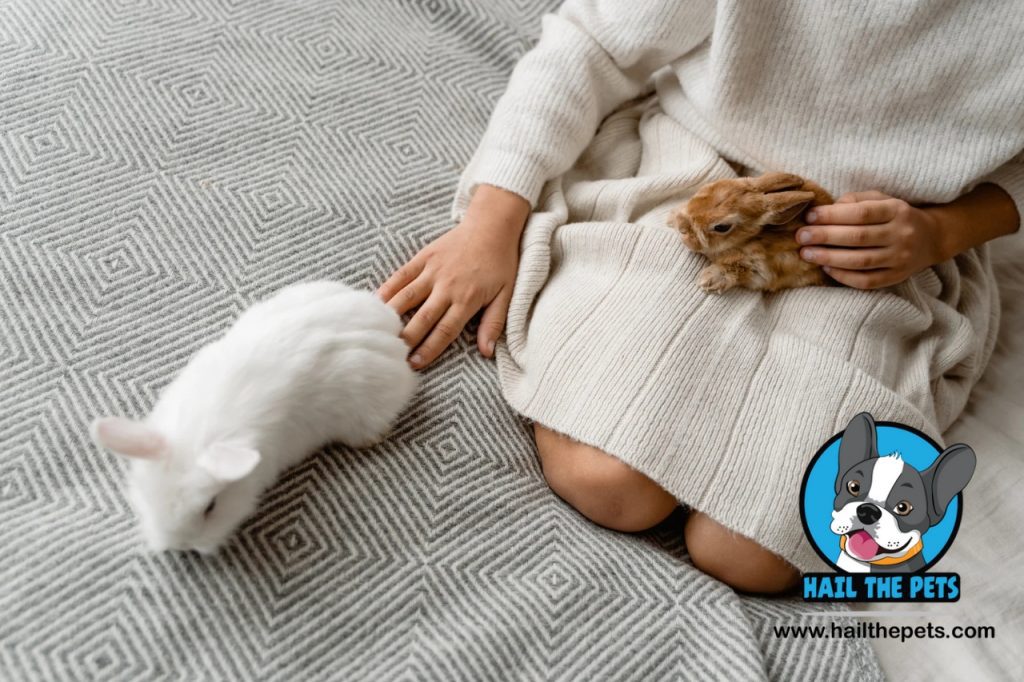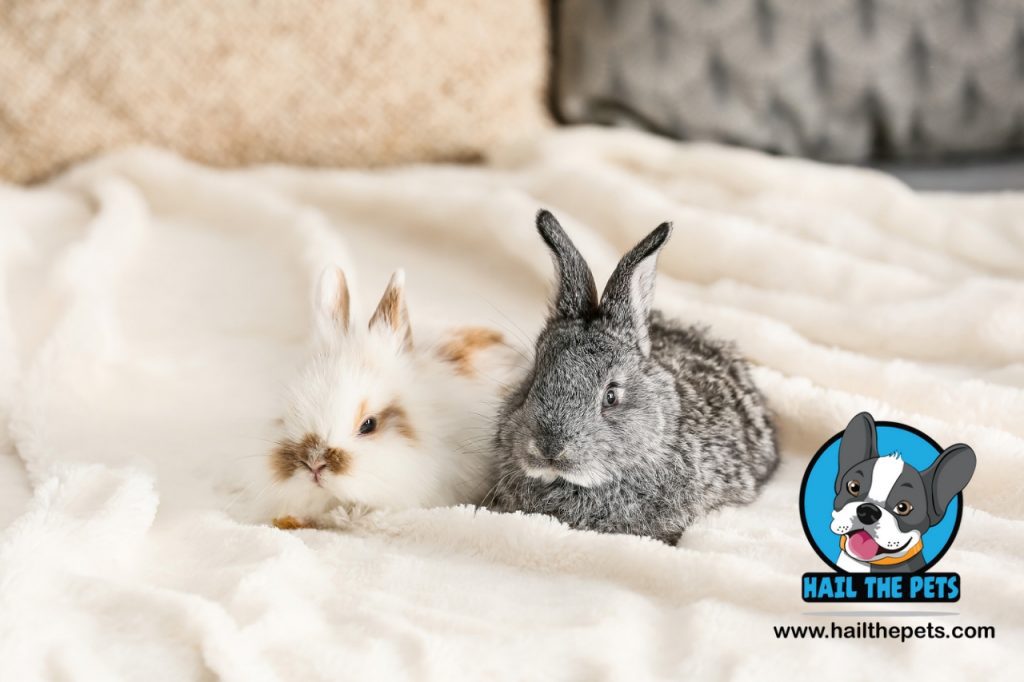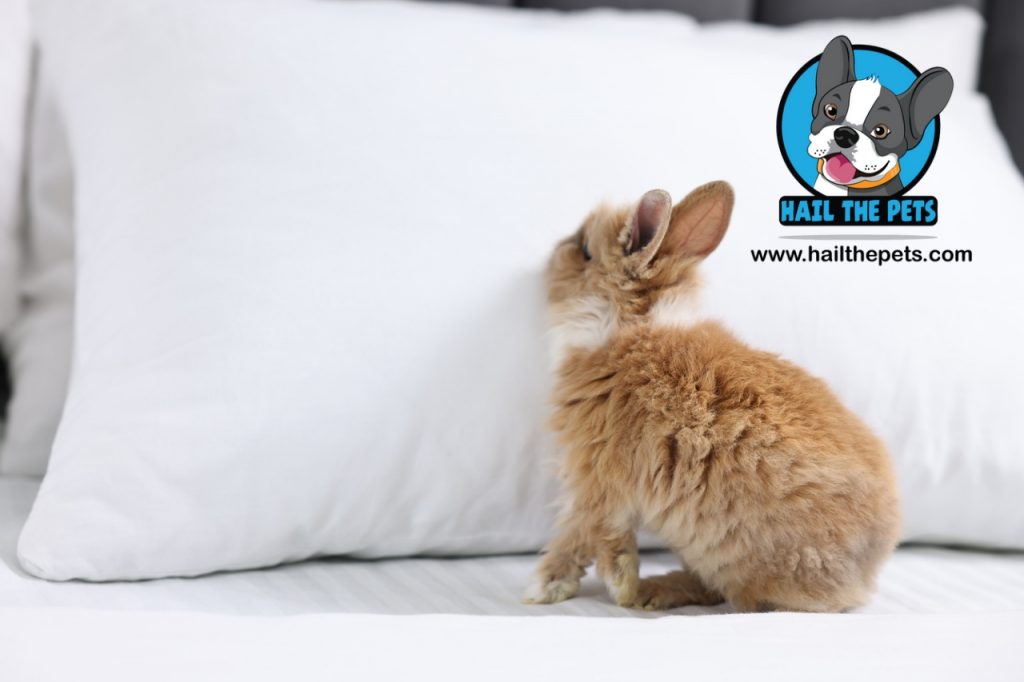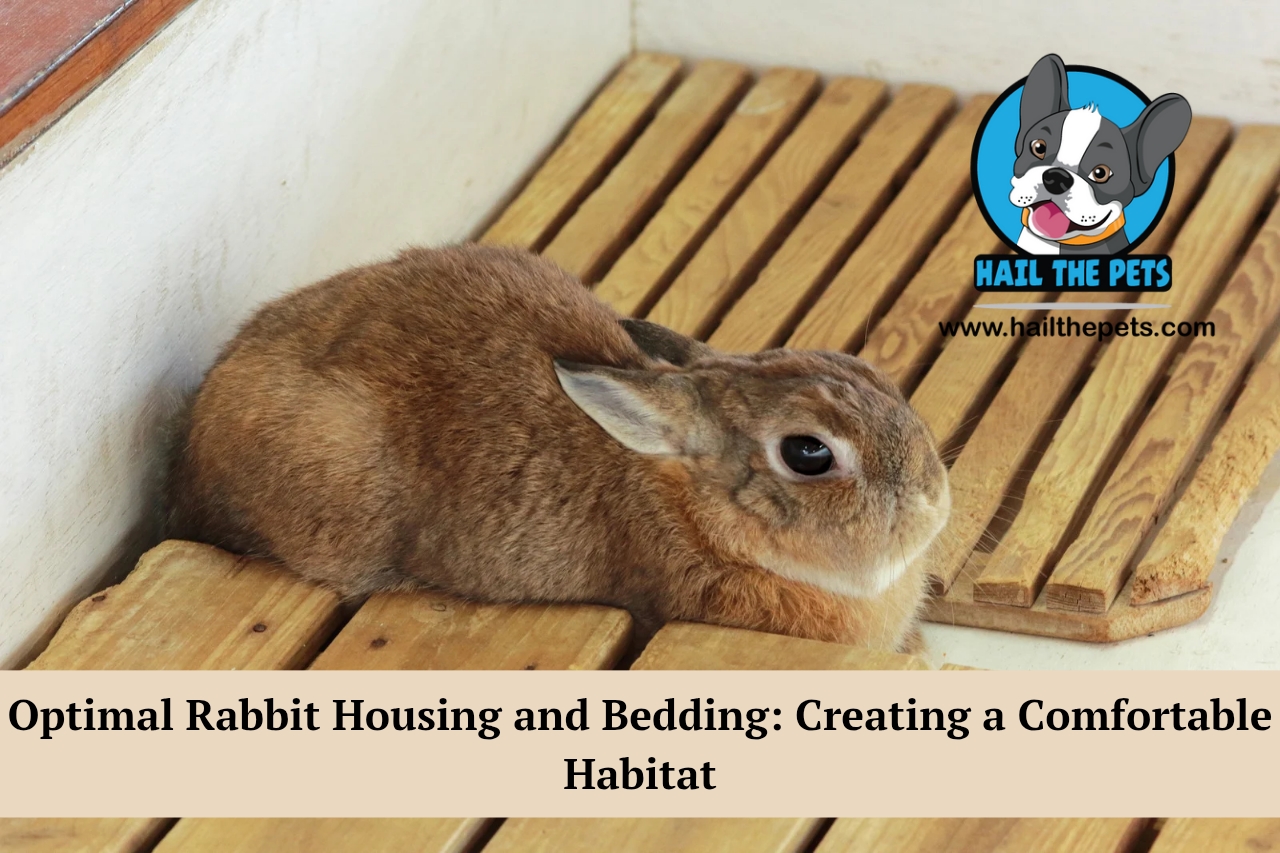Mia observed her bunny calmly sitting in his cage. He would usually be jumping about wildly. For some reason, he was uneasy and distressed looking today. She learned at once that small changes in behavior can be an indication of distress or discomfort. Rabbits are sensitive animals and the environment has much to do with how they’re faring.
Good bedding and rabbit cages are essential to physical and mental well-being. Warm, safe living conditions keep rabbits active. It reduces stress and prevents such common problems as sore hocks or respiratory issues. Comforted rabbits are more likely to wander and play freely with their owners.
Read more: 12 Most Common Rabbit Sounds and What They Mean – June 2025
Rabbits need a bare minimum of 12 square feet of space to happily hop around, stretch out, and play, says Blue Cross. Rabbits become bored, anxious, or even aggressive without the space. Mia knew that small adjustments in rabbit housing and bedding can mean a lot in the comfort and happiness of Thumper.

Safe Rabbit Housing and Bedding
A suitable rabbit environment is a secure area where rabbits can move about freely and be comfortable. Rabbits require sufficient space to hop and exercise on a regular basis. Impervious or poor rabbit housing and bedding may cause health problems and stress.
Temperature and ventilation are as crucial as room. Rabbits are tolerant of temperature extremes and cold. Heat is dangerous, and dampness or cold causes respiratory problems. Insulating, ventilating, and keeping rabbits dry highlights the welfare of rabbits at all times.
Read more: Top 10 Rabbit Breeds: Find the Perfect Rabbit for Your Family
Bedding is a necessary component of comfort. Soft, absorbent, and safe bedding materials like straw, hay, or paper based products warm your bunny and dry fast. It encourages natural behaviors such as burrowing and nesting. The proper bedding provides a healthy and clean rabbit housing and bedding for your bunny with frequent cleaning.
Best Bedding Materials for Rabbits
The mental health of your rabbit depends so much on the material you provide for their bedding. There are many safe bedding options for bunnies. Many people recommend a combination of safe, absorbent materials that will also encourage chewing and digging behaviors. Here are some good picks:
Timothy Hay
Since your bunny enjoys chewing it, you could use it for bedding alongside other materials. Just be sure the hay doesn’t make up her entire bedding. Combine it with other absorbent materials to keep things clean.
Cardboard Box
A cardboard box on its side makes a perfect rabbit bedroom. It gives your bunny a dark and warm space to rest. The enclosed spot helps them feel safe and secure.
Hemp Bedding
This is another great alternative. It’s natural, absorbent, and dust-free. It also doesn’t break down into a powdery mess like some other bedding types.
Aspen Shavings
A popular choice that’s safe for rabbits. It’s absorbent, gentle, and won’t bother their respiratory system the way pine or cedar can. It’s an excellent material to chew, too.
Read more : Bedding and Litter
The best rabbit housing and bedding exists in a comfort-hygiene balance. Absorbent, natural bedding materials promote digging and chewing and maintain cleanliness. With proper bedding, your rabbit will be secure, healthy, and really home.

Indoor vs. Outdoor Rabbit Housing
Ought rabbits be inside or outside? Where should it be placed best? It is a controversial issue for rabbit enthusiasts. There are many people who think that rabbits should be housed exclusively outside, either in the back yard in a hutch or in the garage.
Other people feel rabbits must stay indoors, but have the option of venturing into the garden or patio, whereas other owners feel rabbits must stay indoors 24/7. Let us now look at the advantages and disadvantages of both.
Pros of Indoor Bedding
- Indoor accommodation is maintained at the same temperature throughout the year, but rabbits will still require cooling during summer and additional warmth in the cold weather.
- Indoor rabbits become attached to humans more strongly, as daily interaction is easier and more regular.
- Health and behavioral issues are spotted earlier in indoor rabbits because owners observe them more often.
Cons of Indoor Bedding
- Some bedding products (for example, clay, zinc-based, pine shavings, or oils) are poisonous to rabbits and could lead to respiratory or health issues.
- Bedding should be replaced and cleaned frequently since it is stained by urine and feces right away and needs to be spot cleaned every day and deep cleaned once a week.
- Some materials (such as wood components or absorbent paper) can’t be properly disinfected sometimes and will have to be replaced when soiled.
Pros of Outdoor Bedding
- Put the hutch in partial shade with indirect light and out of direct sunlight in summers. Put it in a sheltered area and protect it from strong winds with additional bedding for warmth.
- Select the area for housing with care to get the right balance of light and protection from extreme weather.
- Create a spacious and safe exercise area that is freely accessible to rabbits. Strong enough to defend against predators.
Cons of Outdoor Bedding
- Increased exposure to pests and environmental toxins.
- Outdoor bedding is more difficult to keep dry and clean. This leads to increased risk of disease and discomfort.
- Outdoor bedding can disrupt litter training and result in unsafe ingestion of soiled or contaminated bedding.
Rabbit Cage Size Recommendations
When it comes to rabbit housing and bedding, it’s all about size. Rabbits are exercise-loving animals that require a lot of space to hop, stretch, and sprawl. A small cage will quickly result in frustration, poor muscle tone, and health problems. For one rabbit, experts suggest at least 12 square feet of enclosed space, with the availability of a daily exercise area.
Rabbits thrive when they can explore. So an attached playpen or safe room is just as important as the base enclosure.
Read more: Stress Signs in Pet Fish: How to Identify and Reduce Aquarium Stress – June 2025
DIY Rabbit Hutch Ideas
Making a rabbit hutch in your home can be cost cutting yet provide you with an opportunity to design for comfort. Utilize strong wood, rabbit friendly wire mesh, and a sturdy roof that shields against predators and inclement weather. Ventilation and simple cleaning should be the priority for indoor hutches.
Easy additions can make a big impact. Ramps promote exercise, tunnels form great hideaways, and chew toys avoid boredom. These tiny improvements transform an ordinary cage into an active play area without breaking the bank.
Read more: How to Choose the Right Pet Food for Your Furry Friend: A Comprehensive Guide to Optimal Nutrition
Consider larger than a cage. Your rabbit enjoys space to hop, stretch, and investigate. A properly thought out DIY hutch provides your bunny with a secure home while maintaining functionality and fun for you.

Maintaining a Clean Rabbit Habitat
Clean living space is vital to rabbit health. Spot cleaning every day eliminates feces, dirty bedding, and dropped food to keep the cage clean. Deep cleaning every week prevents bacterial infestation and smells.
Water and vinegar are appropriate for natural cleaning that is safe for rabbits. Paper-based pellet litter training makes cleanup simpler and reduces odors. Ventilation also reduces odors and moisture.
Desire a clean home without taking hours? Emphasize rapid daily cleaning and organize one thorough clean every week. With this equilibrium, your rabbit has a clean environment while you conserve time and energy.
Read more: Pet Mouse: Creating the Perfect Habitat for Your Pet – June 2025
Temperature Regulation in Rabbit Enclosures
Rabbits are happiest in 60–70°F temperatures. Shelter hutches from the sun in summer to avoid overheating and from wind in winter to stay warm.In the house, put enclosures out from direct drafts or sunlight.
To help your rabbit stay cool in summer place frozen water bottles in the hutch. You can also use damp towels or ceramic tiles. In winter, add insulating straw bedding. Cover outdoor cages with waterproof tarps to block the cold.
Read more: Turtle Care: Ten Tips for Maintaining and Caring for Pet Turtles- A Comprehensive Guide to Turtle Care and Happiness- January 2024
Proper circulation of air is essential all year round. Excessive insulation leads to heat build-up, while substandard air flow exposes dampness to danger. Having everything just perfect avoids your rabbit from getting damaged, keeps them warm, and comfortable.
Small Changes Make a Big Difference for Rabbits
Sarah in Oregon noticed her rabbit Clover sneezing and scratching in a small outdoor hutch with pine shavings. She researched and moved Clover into a larger indoor setup with paper bedding. She also added a playpen for more exercise.
Read more: DIY Rabbit Toys: How to Engage in Fun and Enriching Activities with Your Bunny – January 2024
In a matter of weeks, sneezing in Clover ceased, and she regained energy. Sarah also started finding it simpler to clean the cage each day and get along with her pet because Clover was inside. This small change of rabbit bedding and housing not only improved the health of Clover but also strengthened their bond.
Conclusion
Placing ramps, hideaways, and toys keeps your rabbit stimulated mentally. Rabbits prefer to discover things and require changing stimulation to hold them occupied. A tunnel, a wood ramp, or chew toys can convert their area to an adventure. These little additions shield them from boredom while supporting natural movement and play.
Lastly, contented rabbits are the result of thoughtfulness. A secure living space provides them with peace of mind and good cleansing of rabbit housing and bedding and ventilation for good health. Throw in space, stimulation, and seasonal comfort, and your bunny will be a happy bunny. A well cared for rabbit is playful, friendly, and happy seven days a week.
